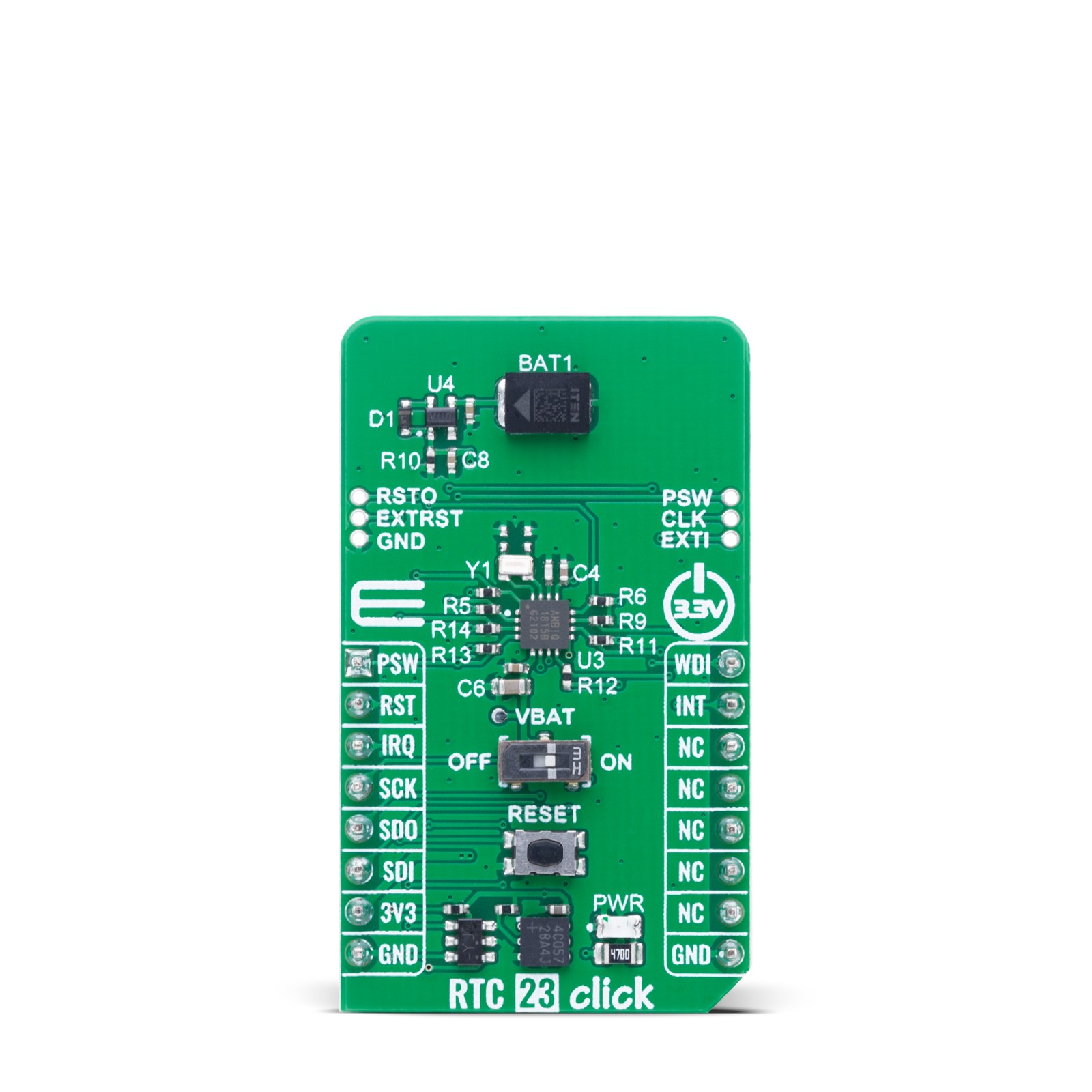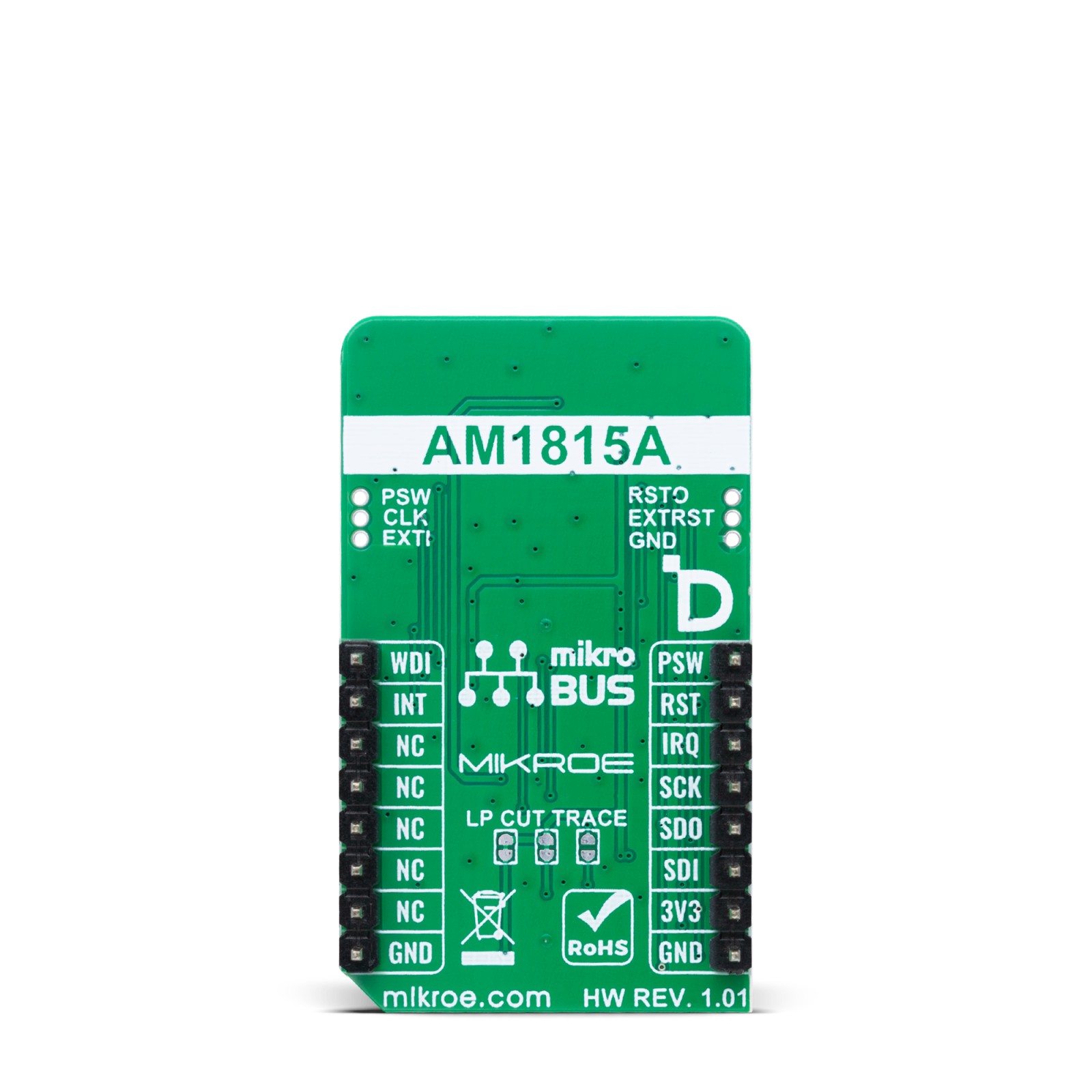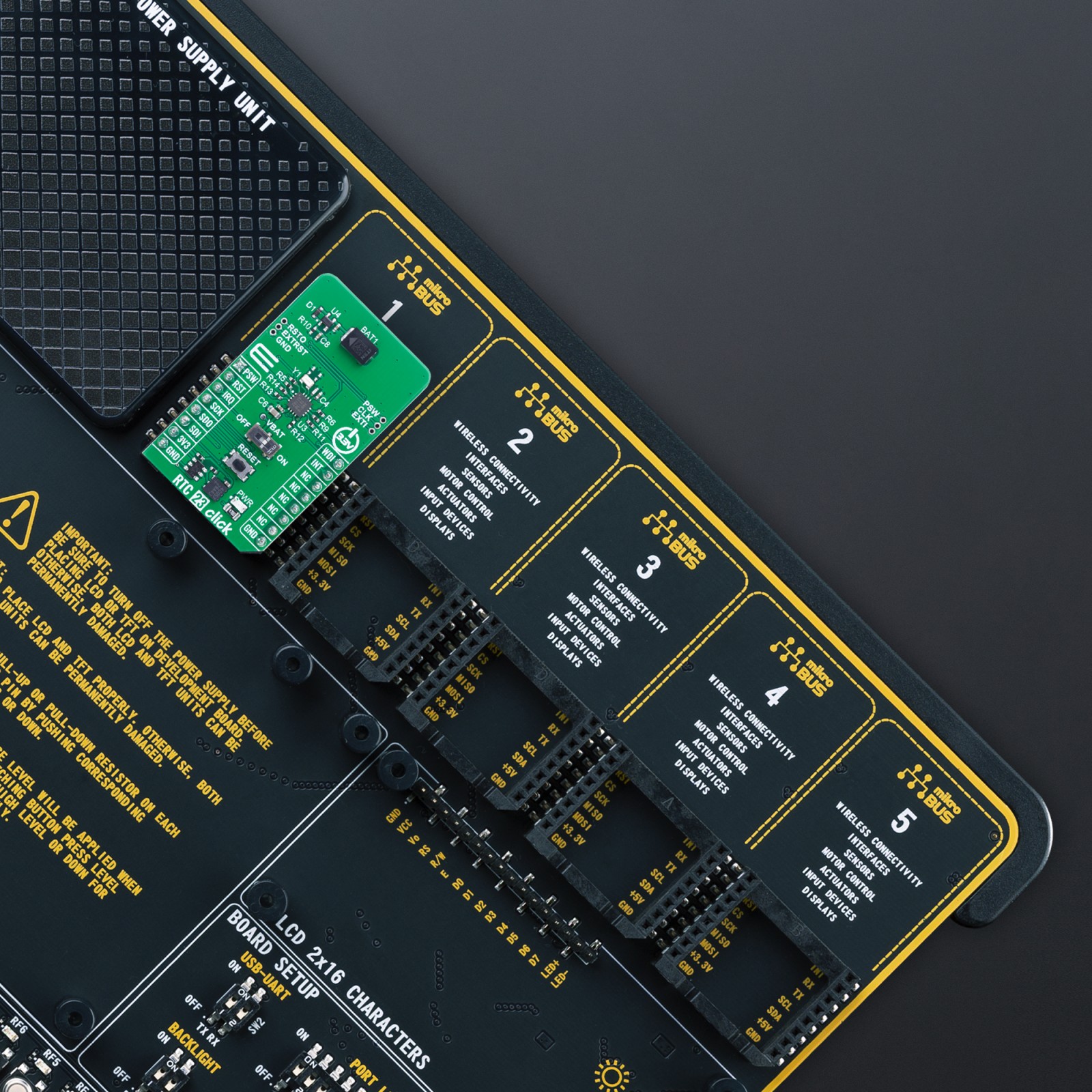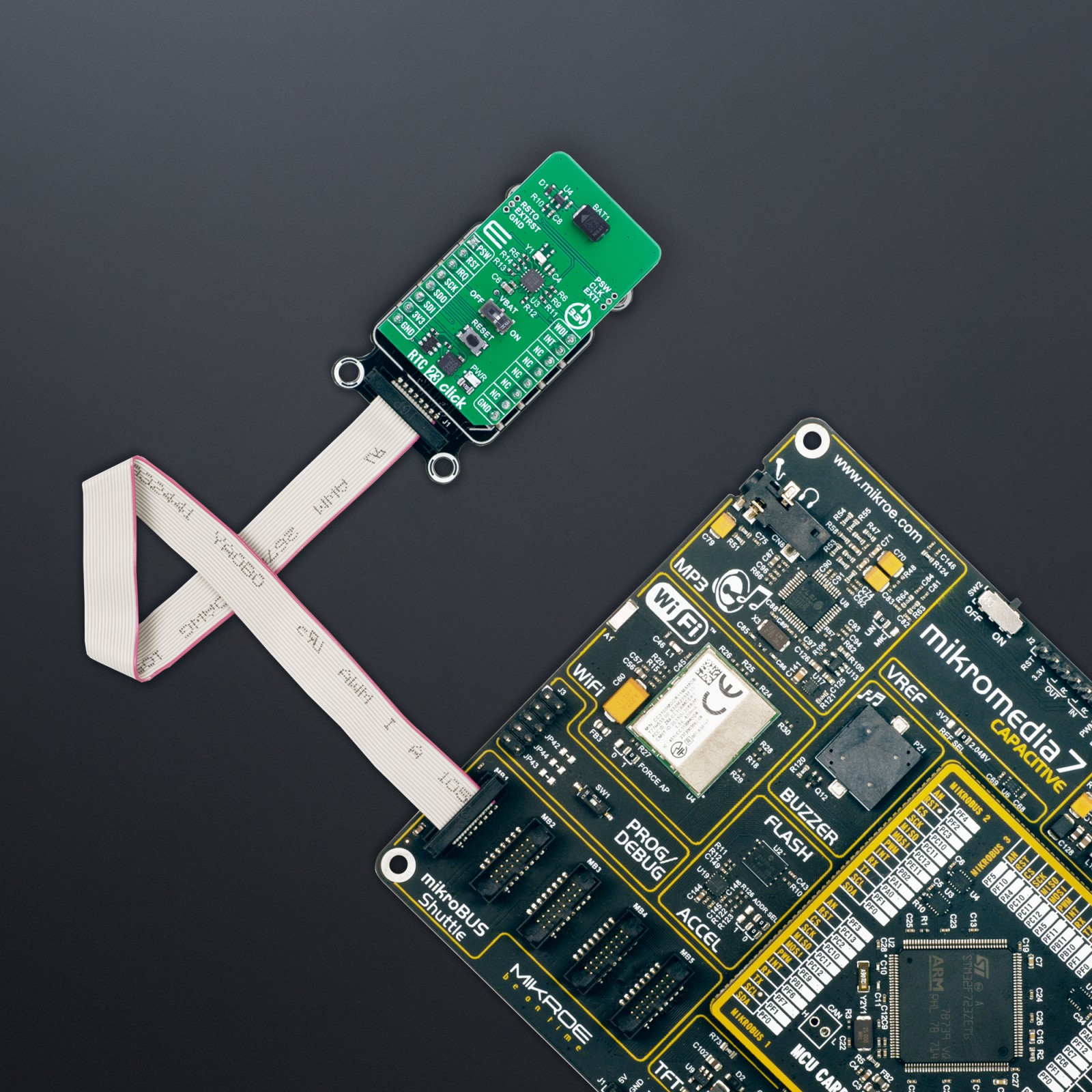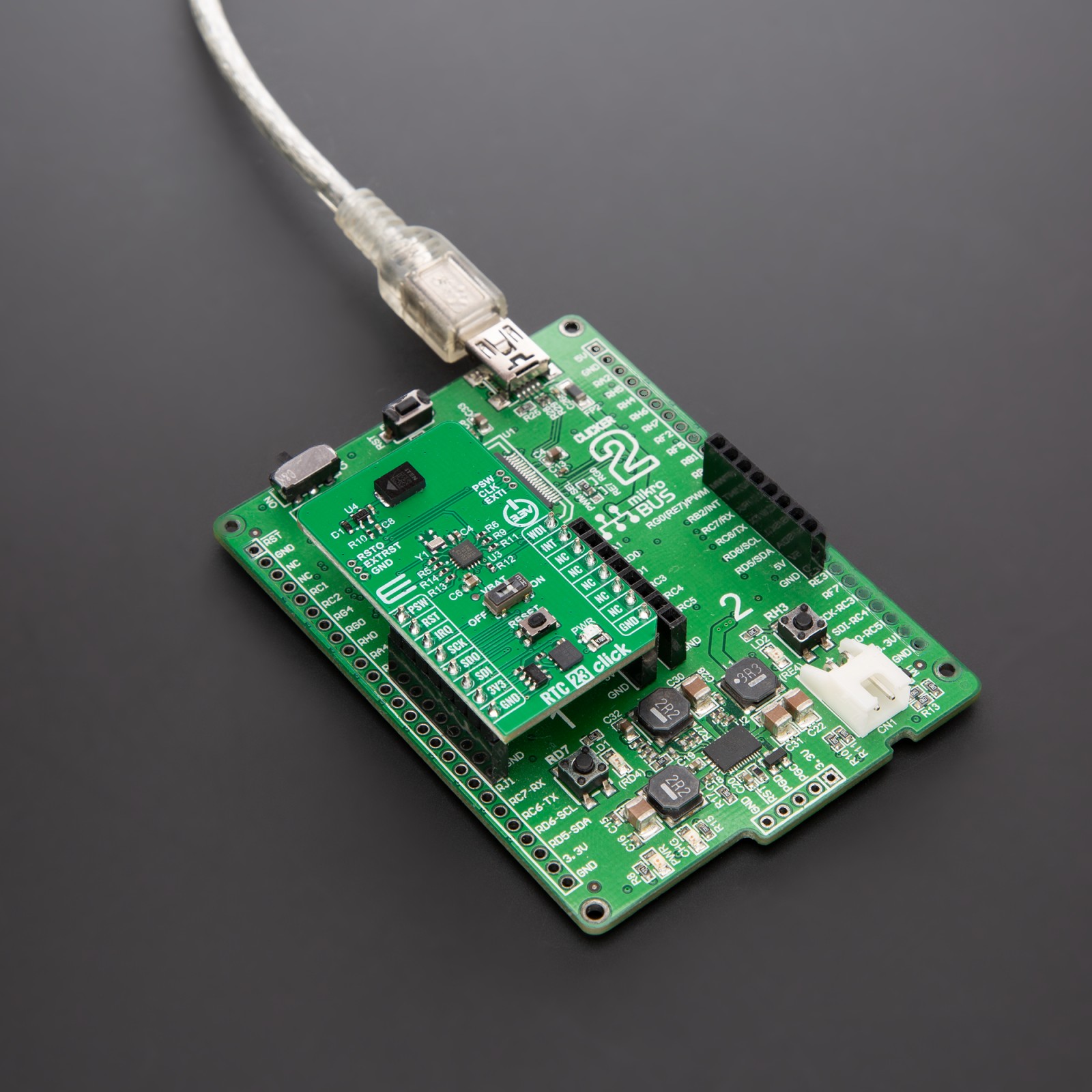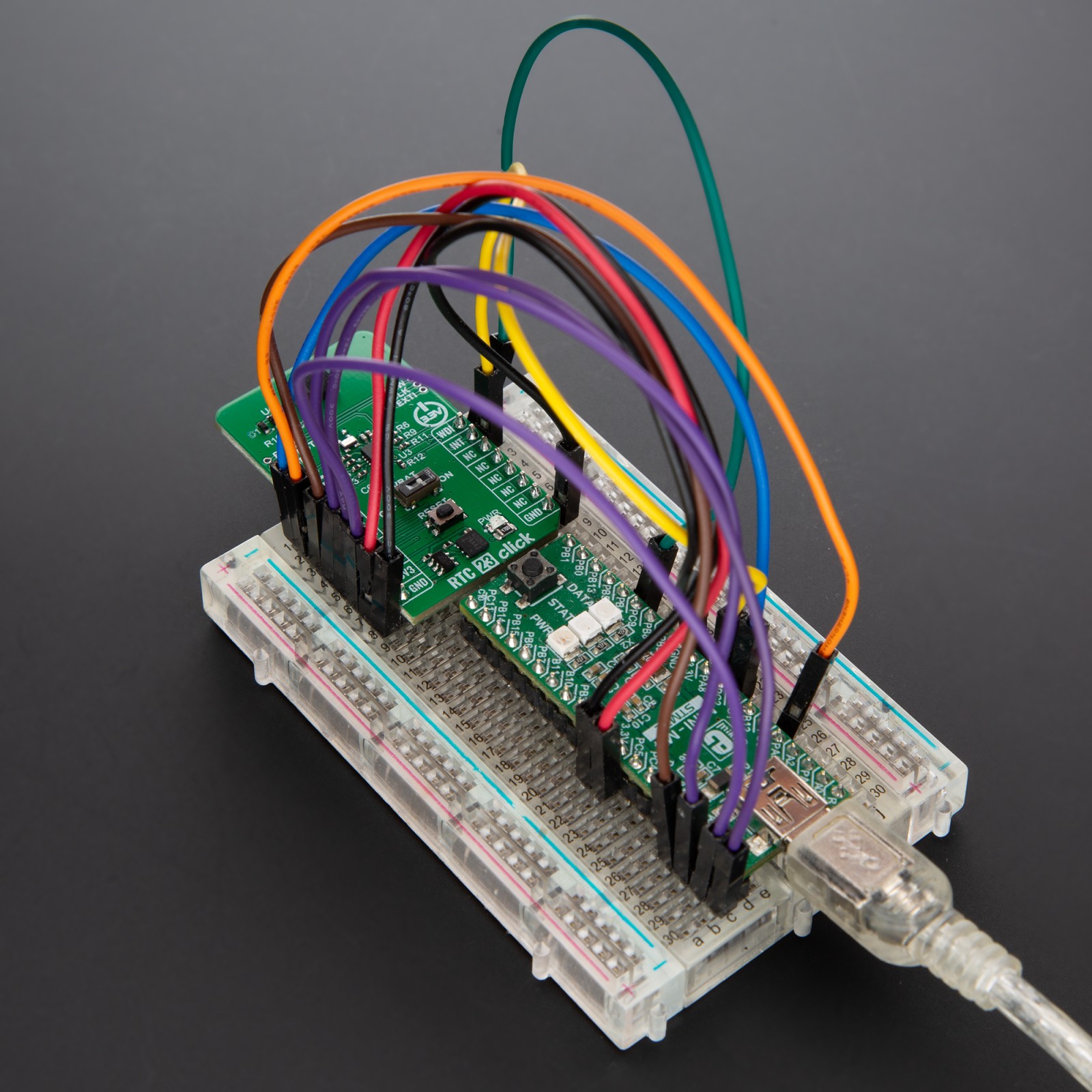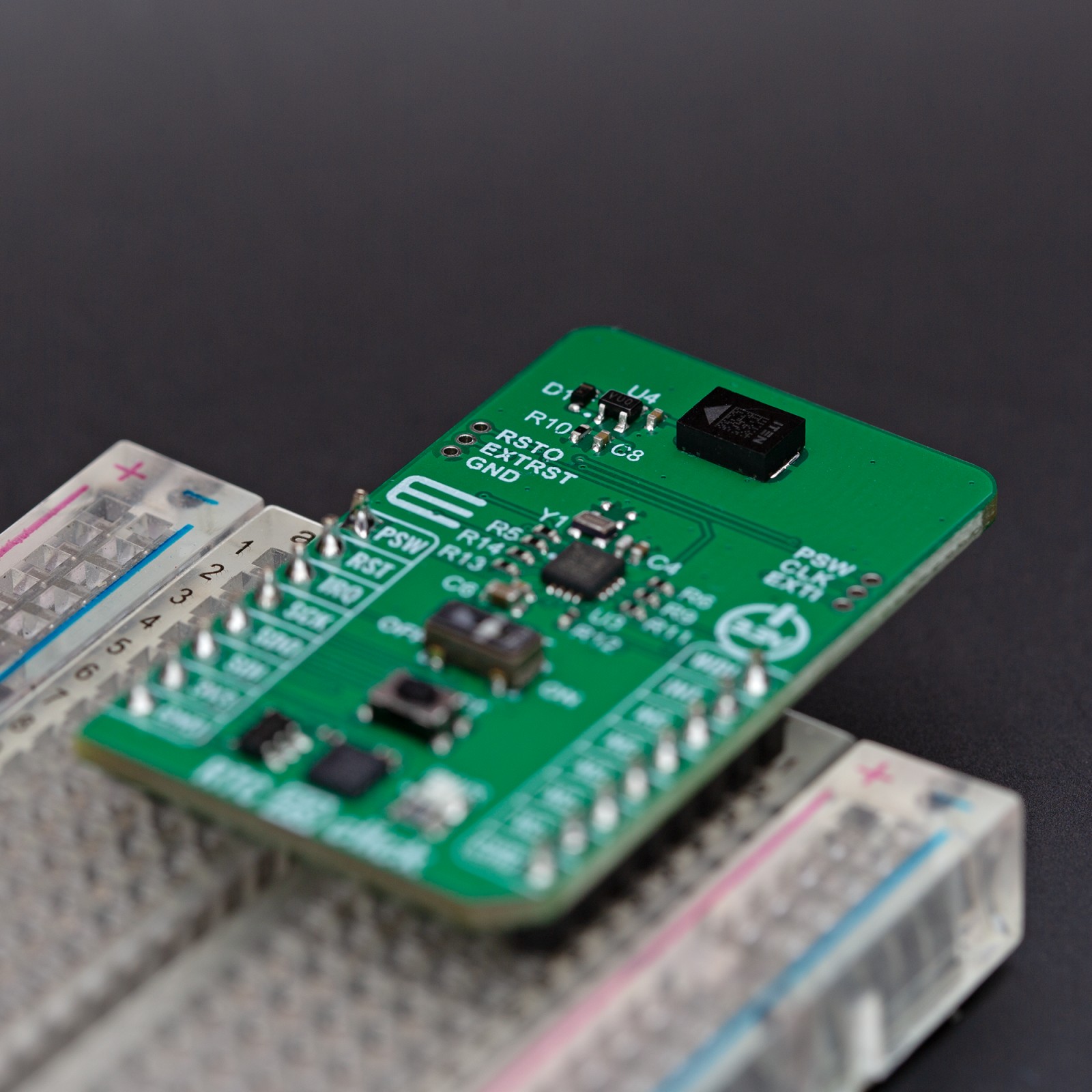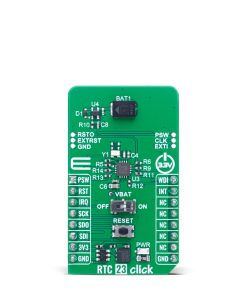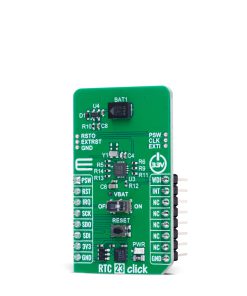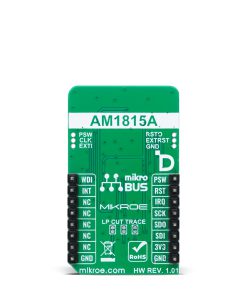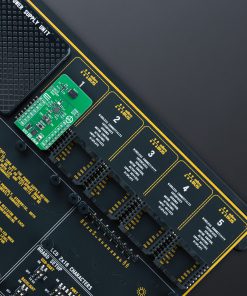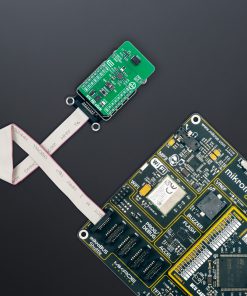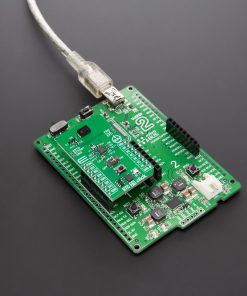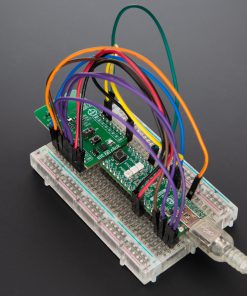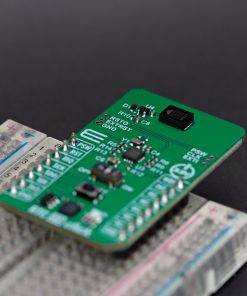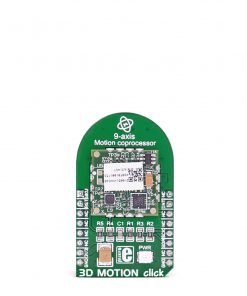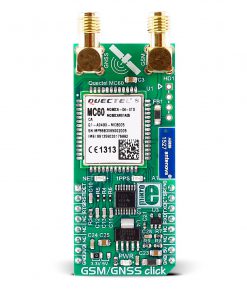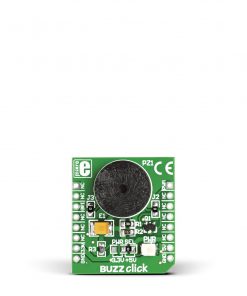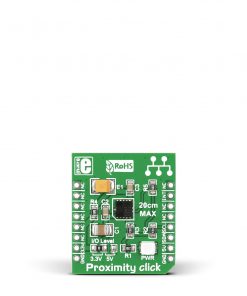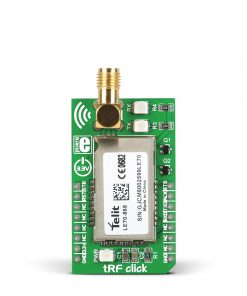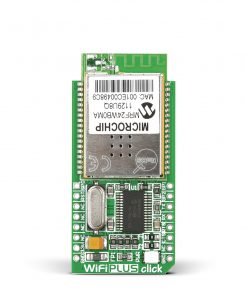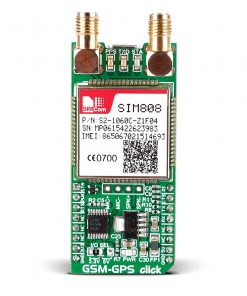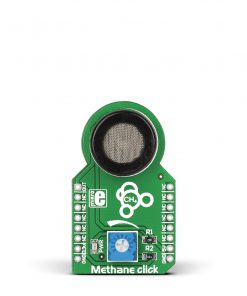Subtotal: R2,500.00
RTC 23 Click
R470.00 ex. VAT
RTC 23 Click is a compact add-on board for accurate timekeeping and power management in low-power applications. This board features the AM1815AQ, an ultra-low power real-time clock IC from Ambiq, using the innovative SPOT® CMOS platform for minimal energy consumption. The board features on-chip oscillators, battery backup with a rechargeable micro-energy battery (the PWY0150S from ITEN), and an intelligent system sleep manager, ensuring reliable timekeeping with power consumption as low as 14nA. It communicates via an SPI interface and offers programmable timers, alarms, a watchdog timer, and flexible power control options. RTC 23 Click is ideal for power-sensitive embedded systems such as medical devices, utility meters, data loggers, consumer electronics, and communication equipment, where precise timing and efficient power management are essential.
RTC 23 Click is fully compatible with the mikroBUS™ socket and can be used on any host system supporting the mikroBUS™ standard. It comes with the mikroSDK open-source libraries, offering unparalleled flexibility for evaluation and customization. What sets this Click board™ apart is the groundbreaking ClickID feature, enabling your host system to seamlessly and automatically detect and identify this add-on board.
Stock: Lead-time applicable.
| 5+ | R446.50 |
| 10+ | R423.00 |
| 15+ | R399.50 |
| 20+ | R384.46 |

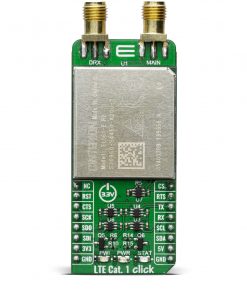 LTE Cat.1-EU Click (for Europe)
LTE Cat.1-EU Click (for Europe) 